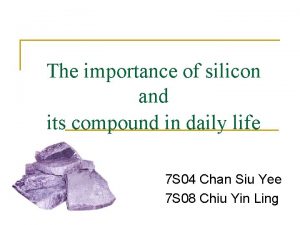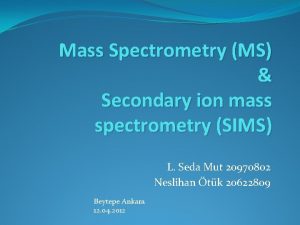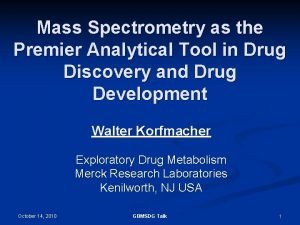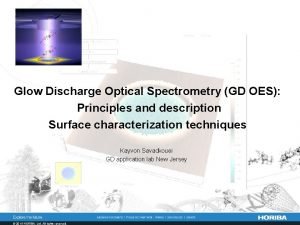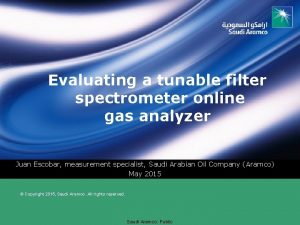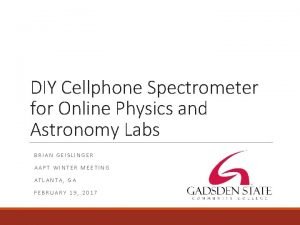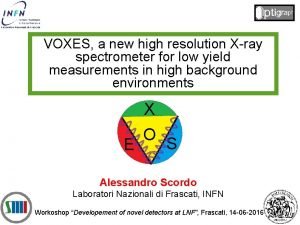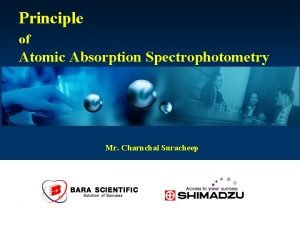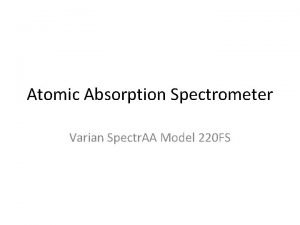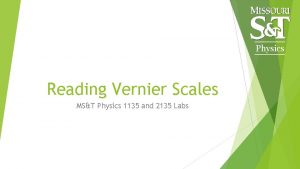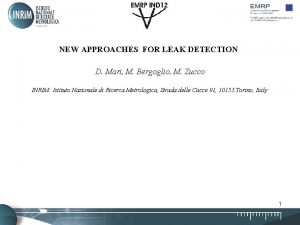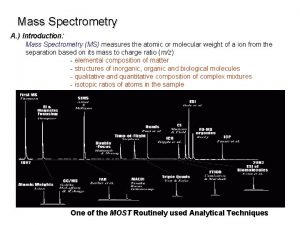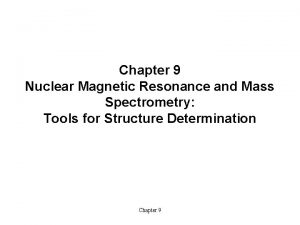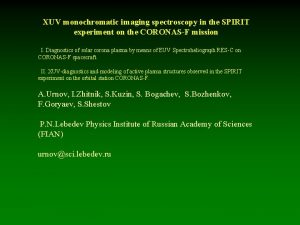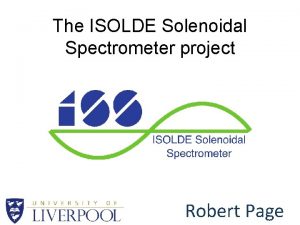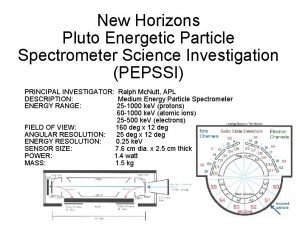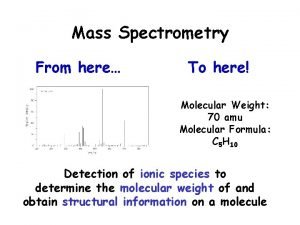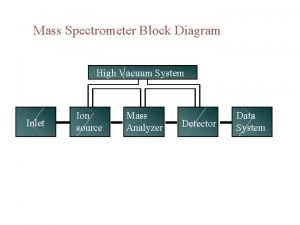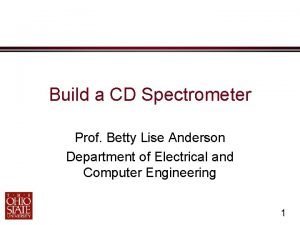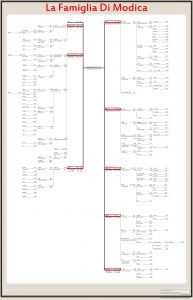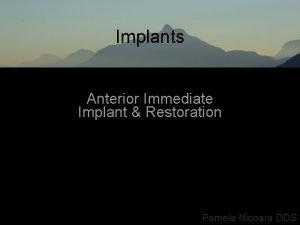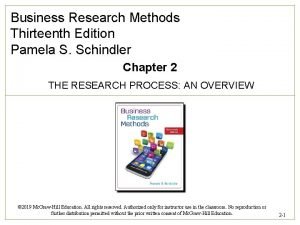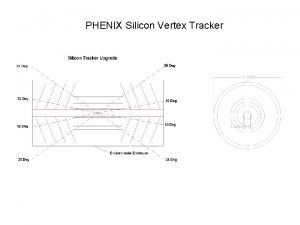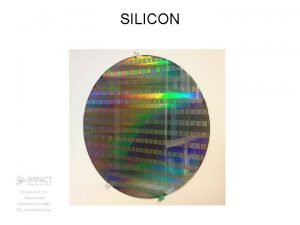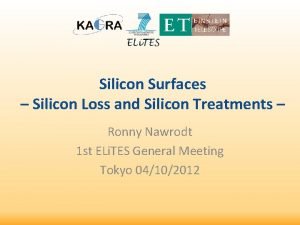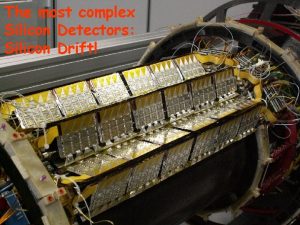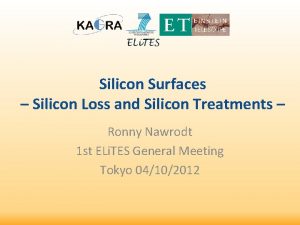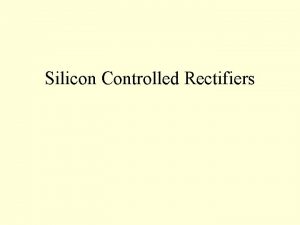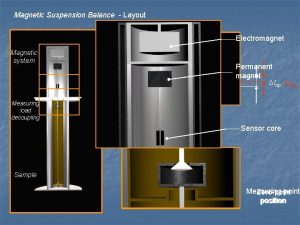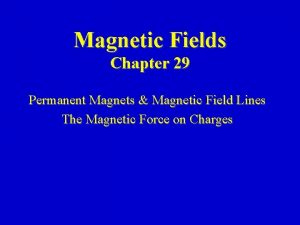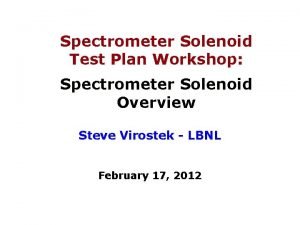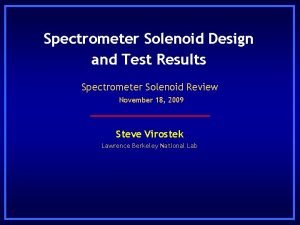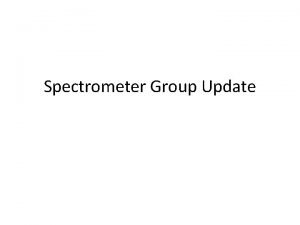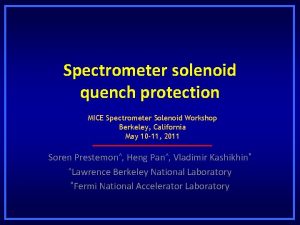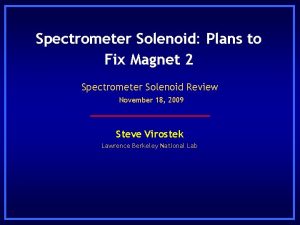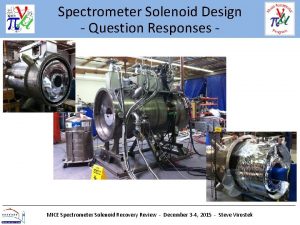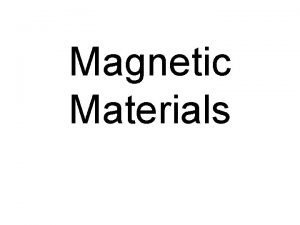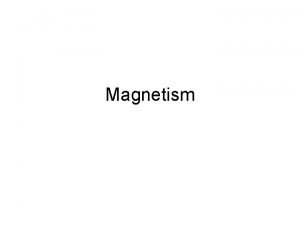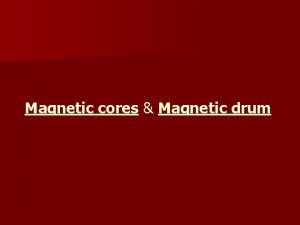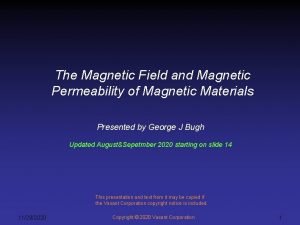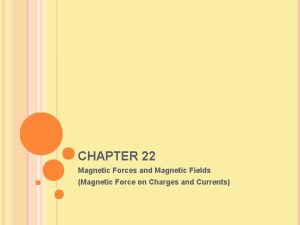The PAMELA Silicon Tracker INTRODUCTION MAGNETIC SPECTROMETER PERMANENT





































- Slides: 37

The PAMELA Silicon Tracker § INTRODUCTION § MAGNETIC SPECTROMETER § PERMANENT MAGNET § SILICON TRACKING SYSTEM § (MECHANICS) § PERFORMANCES of the tracking system § CONCLUSIONS Lorenzo Bonechi - PAMELA collaboration INFN Sezione di Firenze - Dipartimento di Fisica dell’Universita’ di Firenze, 06 October 2005 - RD 05 Lorenzo Bonechi

The PAMELA experiment MAIN TOPICS: Flight model § antiproton and positron spectra delivered § search for light antinuclei Launch from Baikonur SECONDARY TOPICS: Satellite-borne experiment § Modulation of GCRs in (Kazakhstan) the Heliosphere Semi-polar orbit low ene @ end 2005 !!! § Solar Energetic Particles (SEP) § Earth Magnetosphere 3 -years mission high stat PAMELA > 3. 104 antiprotons 80 Me. V/c - 190 Ge. V/c > 3. 105 positrons 50 Me. V/c RESURS - 270 Ge. V/c DK 1 Firenze, 06 October 2005 - RD 05 Lorenzo Bonechi

Satellite and orbit Resurs DK 1 § Earth observation § 350 / 610 km § Inclination = 70. 4 o § Soyuz 2 launcher Pamela operational During launch / orbital manoeuvres § Baikonur Cosmodrome § Launch date = end 2005 § 3 year mission § Housed in an atmospheric pressure vessel § Temperature = 5 o. C ÷ 35 o. C § All subsystems must withstand launch vibrations! 350 - 610 km Firenze, 06 October 2005 - RD 05 § Electronics must withstand up to ~3 krad §Total mass ~ 470 kg / 345 W power budget Lorenzo Bonechi

The PAMELA subdetectors GF ~20. 5 cm 2 sr Magnetic spectromete r § Magnetic rigidity: R = pc/Ze § Charge sign Requirements: MDR = 740 GV (4 mm spatial resolution) Spillover limits: Antiproton up to 190 Ge. V Firenze, 06 October 2005 - RD 05 Positron up to 270 Lorenzo Bonechi

The permanent magnet § 5 magnetic modules § Permanent magnet (Nd -Fe-B alloy) assembled in an aluminum mechanics § Magnetic cavity sizes (132 x 162) mm 2 x 445 mm § Geometric Factor: 20. 5 cm 2 sr MAGNETIC § Black FIELD IR absorbing MEASUREMENTS painting §§ Gaussmeter (F. W. Bell) Magnetic shields equipped with 3 -axis probe mounted on a motorized positioning device (0. 1 mm precision) § Measurement of the three components in 67367 points 5 mm apart from each other § Field inside the cavity 0. 48 T at the center § Average field along Firenze, 06 October 2005 - RD 05 the central axis of the Lorenzo Bonechi

The silicon tracking system DESCRIPTION of the SILICON SENSORS • • Double Sided (x & y view) Double Metal on the n side (No Kapton Fanout) AC Coupled (No external chips) Produced by Hamamatsu Geometrical Dimensions Thickness Leakage Current Decoupling Capacitance Total Defects p side Implant Pitch Readout Pitch Biasing Resistance (FOXFET) Interstrip Capacitance n side Implant Pitch Readout Pitch Biasing Resistance (Poly. Silicon) Interstrip Capacitance Firenze, 06 October 2005 - RD 05 70. 0 x 53. 3 mm 2 300 mm < 3 m. A > 20 p. F/cm < 2% 25. 5 mm 51 mm > 50 MW < 10 p. F 67 mm 50 mm > 10 MW < 20 p. F Lorenzo Bonechi

structure of the tracking 6 detector planes composed by 3 “ladders” system §ladder : - 2 microstrip silicon sensors - 1 “hybrid” with front-end electronics § silicon sensors (Hamamatsu): § 300 mm, Double Sided - x & y view § Double Metal - No Kapton Fanout § AC Coupled - No external chips § FE electronics: VA 1 chip § Low noise charge preamplifier Firenze, 06 October 2005 - RD 05 Lorenzo Bonechi

Silicon sensors defects Request to Hamamatsu: Defects < 2% Defects: Short Circuit of AC coupling (Most common, not destructive) Short between adjacent strips Open circuit on metal lines It seems to be ‘ perfect ’ BUT… The first batch was OK (Prototype ladders were ‘perfect’, bad strip < 2%) We started the mass production… Huge number of bad strips (>10%)!!!!! After a big ‘fight’ we discovered in many sensors short circuits between adjacent strips at the level of implantation (p side). Hamamatsu replaced all the bad sensors (few months of delay) Firenze, 06 October 2005 - RD 05 Lorenzo Bonechi

Implantation procedure problems! Transverse ‘cuts’ on the junction side reduce the interstrip resistance Firenze, 06 October 2005 - RD 05 Lorenzo Bonechi

The mechanical assembly Requirements: • • • Solution: 1 plane made by 3 ladders no material above/below the plane (1 plane = 0. 3% X 0!!!) survive to the launch phase (7. 4 grms, 50 g shocks!!!) good alignment precision thermal stresses (5 -35 0 C) Carbon fibers stiffeners glued laterally to the sensors • very high Young module carbon fiber (300 Gpa) • pultrusion technology Elastic + Rigid gluing A very thin (2. 5 mm) Mylar foil is glued on the plane to increase the safety of the whole spectrometer during integration and flight phases No coating on the bonding Firenze, 06 October 2005 - RD 05 Lorenzo Bonechi

The first silicon plane Firenze, 06 October 2005 - RD 05 Lorenzo Bonechi

Mylar film protecting the plane Firenze, 06 October 2005 - RD 05 Lorenzo Bonechi

Test plane lodging on the magnet Firenze, 06 October 2005 - RD 05 Lorenzo Bonechi

The flight model of the magnetic spectrometer Firenze, 06 October 2005 - RD 05 Lorenzo Bonechi

Detector performances (1) Strip Y MIP 50 noise view <SIG>GOOD = 9. 2 X view <SIG>GOOD = 4. 4 signal Ge. V/c proton (CERN-SPS Firenze, 06 October 2005 - RD 05 2003) Lorenzo Bonechi

Detector performances (2) Spatial resolution sx = (2. 77 ± 0. 04) mm ETA 4 ETA 3 ETA 2 sy = (13. 1 ± 0. 2) mm ETA 2 40 -100 Ge. V pions (CERN-SPS 2000) beam-test of a small trackingsystem prototype Firenze, 06 October 2005 - RD 05 Simulation of silicon detector: best p. f. a. angle -dependent non-linear ETA Lorenzo Bonechi

Momentum resolution 2003 Last beam-test 40 -150 Ge. V/c of PAMELA protons Track selection cuts: § Nx 5 Ny 4 § Hit views 1 x and 6 x § 95%-efficiency cut on ultiple f c 2 scattering N x & sx MDR Firenze, 06 October 2005 - RD 05 ~ 1 TV Lorenzo Bonechi

On-ground muon results 2005 acquisition of atmospheric particles during p p r r PAMELA teste before delivering e l Ve Check of spectrometer systematics i m ry positive and negative muons i l Ve with i m ry i n a r y y ! Very preliminary results: - no efficiency correction - first-order alignment - no ETA p. f. a. Firenze, 06 October 2005 - RD 05 Lorenzo Bonechi !

Conclusions § PAMELA apparatus integrated and delivered to the Russian space agency launch foreseen for the end of 2005 § Detectors tested with particle beams and atmospheric muons during integration phase Spectrometer: § sx~3 mm at 0 o, sx< 4 mm up to 10 o § MDR up to 1 TV The spectrometer meets the Firenze, 06 October 2005 - RD 05 Lorenzo Bonechi requirements for the PAMELA

------------------------------- Firenze, 06 October 2005 - RD 05 Lorenzo Bonechi

The PAMELA experiment • • MAIN TOPICS: fluxes measurement Search for light Antinuclei Antiproton flux Positron charge ratio SECONDARY TOPICS: • • Modulation of GCR’s in the Heliosphere Solar Energetic Particles (SEP) Earth Magnetosphere … spectra e+ spectra 80 Me. V/c … 190 Ge. V/c 50 Me. V/c … 270 Ge. V/c Firenze, 06 October 2005 - RD 05 Lorenzo Bonechi

Expected Fluxes in 3 Years Particle Number (3 yrs) Energy Range Protons 3. 108 80 Me. V – 700 Ge. V Antiprotons >3. 104 80 Me. V – 190 Ge. V Electrons 6. 106 50 Me. V – 2 Te. V Positrons >3. 105 50 Me. V – 270 Ge. V He 4. 107 80 Me. V/n – 700 Ge. V/n Be 4. 104 80 Me. V/n – 700 Ge. V/n C 4. 105 80 Me. V/n – 700 Ge. V/n Antihelium Limit 7. 10 -8 80 Me. V/n – 30 Ge. V/n • ‘Semi-Polar’ orbit (700) Low energy particles • Wide energy range + 3 years mission Reliable measurements Firenze, 06 October 2005 - RD 05 Lorenzo Bonechi

Pamela Subdetectors TRD Anticoincidence system • Threshold device. Signal from e±, no signal from p, p • Defines acceptance for tracker • 9 planes of Xe/Co 2 filled straws (4 mm diameter). Interspersed with carbon fibre radiators crude tracking. • Plastic scintillator + PMT 1. 2 m • Aim: factor 20 rejection e/p (above 1 Ge. V/c) (2. 105 with calorimeter) • Timing resolution = 120 ps • Measures rigidity Si-W Calorimeter • 5 Nd-B-Fe magnet segments (0. 4 T) • Measures energies of e±. DE/E = 15% / E 1/2 + 5% • 6 planes of 300 mm thick Si detectors • +/-10 MIP dynamic range Firenze, 06 October 2005 - RD 05 • Trigger / detects albedos / particle identification (up to 1 Ge. V/c) / d. E/dx • Plastic scintillator + PMT Si Tracker + magnet • ~3 mm resolution in bending view demonstrated, ie: MDR = 740 GV/c Time-of-flight • Si-X Mass ~450 kg Acceptance ~20. 5 cm 2 sr / W / Si-Y structure. • 22 Si / 21 W 16 X 0 / 0. 9 l 0 • Imaging: EM - vs- hadronic discrimination, longitudinal and transverse shower profile Lorenzo Bonechi

The PAMELA Magnetic Spectrometer • Magnetic System – It produces an intense magnetic field region where charged particles follow curved trajectories • Tracking System – It allows to determine six points in the high field region to reconstruct the particle trajectory and so its momentum and charge sign • • e+ B Firenze, 06 October 2005 - RD 05 Momentum p = m g v Charge sign (e+/e-) (p/p) Ø If B uniform and perpendicular to p, then Lorenzo Bonechi

A glossary of magnetic spectrometers for cosmic rays studies • • • Momentum Rigidity Deflection • DR/R = Dh/h = R Dh (Dh = constant point’s measurement error) p = q. Br (r=radius of curvature) R = p/q = Br h = 1/R = q/p spatial resolution • Maximum Detectable Rigidity (MDR) : e+ B Firenze, 06 October 2005 - RD 05 Lorenzo Bonechi

The PAMELA Magnetic Spectrometer MAGNETIC SYSTEM • 5 magnetic modules • permanent magnet assembled in an aluminum mechanics Permanent magnet elements Geometry of a magnetic block The “Magnetic Tower” Tower – Nd-Fe-B alloy • magnetic cavity sizes: • field inside the cavity: • places for detector planes and electronics boards lodging • Geometric Factor: 20. 5 cm 2 sr • Black IR absorbing painting (not shown in the picture!) – (132 x 162) mm 2 x 445 mm – 0. 48 T at the center Firenze, 06 October 2005 - RD 05 Base Plate Aluminum prototype frame Lorenzo Bonechi

The PAMELA Magnetic System Magnetic field measurement • Gaussmeter F. W. Bell equipped with 3 -axis probe mounted on a motorized positioning device (0. 1 mm precision) • Measurement of the three components in 67367 points 5 mm apart from each other • Average field along the central axis of the magnetic cavity: 0. 43 T • Good uniformity ! Firenze, 06 October 2005 - RD 05 Main field component along the cavity axis Main field component for z=0 (II) Main field component for z=0 (I) Lorenzo Bonechi

The PAMELA Tracking System The “ladder” The detector planes The TRACKER The silicon sensor • 6 detector planes • each plane: “ladders” • the “ladder”: 2 microstrip silicon sensors + 1 hybrid circuit with front-end electronics (VA 1 chip) • silicon sensors: double sided; double metalization; integrated decoupling capacitance • resolutions: • MDR > 740 (GV/c) composed Firenze, 06 October 2005 - RD 05 by 3 Lorenzo Bonechi

Few words on the electronics…. Requirements: Solutions: • Very small power consumption • (60 W all included for 36864 readout channels) • Very low noise (3 mm resolution required!!!!) • VA 1 chips: ENC = 185 e- + 7. 5 e- C(p. F) Small input Capacitance (<20 p. F) Decoupling between front-end and read-out • Redundancy and safety (satellite experiment) • Big modularity, hot/cold critical parts • Protection against highly ionizing cosmic rays (Mainly Single Event Effect tests) • Selection of components (dedicated tests) Limiting circuits on the power lines Architectural `tricks’ (error correction codes, majority logic etc. ) • Very big data reduction (4 GB/day of telemetry, 5 Hz trigger rate, 30 GB/day of data, >90% reduction is mandatory) • 12 dedicated DSP (ADSP 2187) with highly efficient compression alghoritm Firenze, 06 October 2005 - RD 05 CMOS low power analog and digital electronics Lorenzo Bonechi

Tracker front-end: thermal test MAGNETIC FIELD MEASUREMENTS § Test were done in the following conditions: Mechanical aluminum frames with iron replacing the magnet; Different paints; System closed in a vacuum chamber to avoid air convection; Tracker planes replaced by mechanical planes (mechanical silicon + raw alumina) with the front-end electronics Firenze, 06 October 2005 by - RD 05 resistors; replaced Lorenzo Bonechi

Siliconic glue Silicon gluing points Firenze, 06 October 2005 - RD 05 Lorenzo Bonechi

Vibrations tests in Galileo (Florence) First resonance frequency: 340 Hz!!!! Test plane survived to +6 db spectrum (10. 4 g rms) and repeated 50 g/5 ms + 40 g/1 ms shocks Firenze, 06 October 2005 - RD 05 Lorenzo Bonechi

ZOP compression algorithm No Zero Suppression (Losses of particles in case of bad strips or change in the pedestals!!!) We use a reversible alghoritm (Zero Order Predictor, ZOP) Deventstrip = ADC eventstrip - PEDstrip - CNevent Deventstrip is distributed around 0 First word is transmitted Following word is transmitted if above/below n s. . A word is transmitted with the corresponding address if the preceding one was not transmitted If a cluster is identified (Deventstrip > N s) +/- 2 strips are transmitted Firenze, 06 October 2005 - RD 05 Lorenzo Bonechi

Some results on the compression… Compression time<1 ms factor>96% • Decompressed data o Non compressed data First Plane Signal/Noise • Decompressed data o Non compressed data Last Plane Resolution Dx (mm) Firenze, 06 October 2005 - RD 05 Lorenzo Bonechi

2002: production of flight model detector planes Performances obtained with cosmic rays in Firenze : s/n for MIP Firenze, 06 October 2005 - RD 05 Lorenzo Bonechi

July 2000: CERN SPS • FINAL LADDERS • FINAL ELECTRONICS • SMALLER MAGNETIC SYSTEM Firenze, 06 October 2005 - RD 05 Spatial resolution h. DISTRIBUTION Dp/p versus p (July 2000 beam test with 5 ladder prototype MS) h=1/R=q/p Lorenzo Bonechi

July 2002: CERN SPS During the last test (June 2002) the spectrometer flight model has been tested to determine the performances Firenze, 06 October 2005 - RD 05 300 Ge. V /c Electron event Signal/Noise Signal nons/n bending 26 view bending s/n 52 view Lorenzo Bonechi
 Difference between antiferromagnetism and ferrimagnetism
Difference between antiferromagnetism and ferrimagnetism Unit of magnetic flux density in weber
Unit of magnetic flux density in weber Magnetic moment and magnetic field relation
Magnetic moment and magnetic field relation Magnetic field and magnetic force
Magnetic field and magnetic force Why is silicon important
Why is silicon important Mass spectrometer block diagram
Mass spectrometer block diagram Components of mass spectrometer
Components of mass spectrometer Quadrupole mass spectrometer
Quadrupole mass spectrometer Gd oes spectrometer
Gd oes spectrometer Dispersive power of plane transmission grating
Dispersive power of plane transmission grating Tuneable filter spectrometer
Tuneable filter spectrometer Cell phone spectrometer
Cell phone spectrometer Xray spectrometer
Xray spectrometer Atomic absorption spectrophotometer principle
Atomic absorption spectrophotometer principle Varian atomic absorption spectrometer
Varian atomic absorption spectrometer Mst physics 1135
Mst physics 1135 Ftir spectrometer
Ftir spectrometer Quadrupole mass analyzer
Quadrupole mass analyzer Mass spectrometer
Mass spectrometer 29122002 color
29122002 color Spectrometer
Spectrometer Spectrometer
Spectrometer Mass spectrometer formula
Mass spectrometer formula Spectrometer
Spectrometer Butyl isopropyl ether
Butyl isopropyl ether Betty lise anderson
Betty lise anderson Pamela pizarro alvarez
Pamela pizarro alvarez Dra pamela santos
Dra pamela santos Pamela thielman
Pamela thielman Pamela tosatti
Pamela tosatti Pamela goldberg
Pamela goldberg La mia citta'
La mia citta' La famiglia di sara
La famiglia di sara Pamela nicoara
Pamela nicoara Pamela aray
Pamela aray Pamela schindler
Pamela schindler Dr pamela beck
Dr pamela beck Pamela guest
Pamela guest




